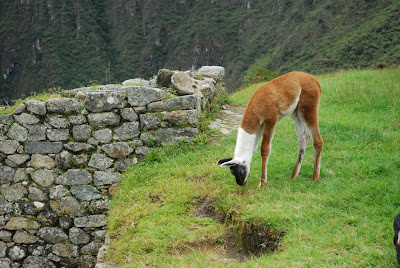Puno woman passes
something nice for the traveler --
beyond the door, empty
This woman is wearing traditional Puno attire, a bowler hat perched and tilted forward on her braided hair, a colorful woven shawl for carrying everything, and a full, brightly colored skirt. The sign above the doors advertises in icons all the amenities available in the hotel: bed, television, shower (presumably with hot water), telephone, food, internet access and laundry. Munay Tambo in Quechua means "something nice for the traveler." However, beyond the doors all of these amenities have disappeared while the hotel is being completely reconstructed. The woman continues unchanged in her traditional ways while the modern hotel catering to passing tourists undergoes major changes.

































